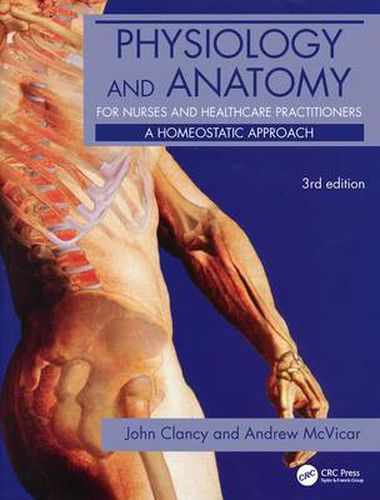Readings Newsletter
Become a Readings Member to make your shopping experience even easier.
Sign in or sign up for free!
You’re not far away from qualifying for FREE standard shipping within Australia
You’ve qualified for FREE standard shipping within Australia
The cart is loading…






The third edition of Physiology and Anatomy for Nurses and Healthcare Practitioners: A homeostatic approach presents homeostasis as a dynamic concept that provides the basis for understanding health and well-being. It recognises how failure to respond to homeostatic disturbances results in imbalances responsible for signs and symptoms of ill-health, and describes how healthcare interventions seek to reverse those imbalances.
Accompanied by colour illustrations and a description of related anatomy, the book provides an integrated explanation of body functioning. It discusses the organisation of the human body, main features and processes that must be controlled for health, the organ systems that act as homeostatic regulators, and effectors of homeostatic regulation. It also discusses influences on homeostasis and provides case studies that place examples of ill health and health care into the context of homeostasis.
Features of the third edition include:
An overview of microbiology and principles of infection management Expanded information on pharmacological principles and actions of the major classes of drugs Expanded discussion on physiological functions in relation to specific pathologies
Updates on how the Human Genome project has impacted healthcare Additional case studies to illustrate the healthcare provider’s role as an external agent of homeostatic control
Photographs of common clinical conditions
Access to an accompanying website with supplemental information
An essential physiology and anatomy text, this book guides readers through the basic structure and functions of the body systems to more complex issues of clinical disorders and healthcare practice. Coverage includes the cardiovascular, lymphatic, nervous, endocrine, reproductive, and respiratory systems as well as skeletal muscle, embryo development, and circadian rhythms.
$9.00 standard shipping within Australia
FREE standard shipping within Australia for orders over $100.00
Express & International shipping calculated at checkout
The third edition of Physiology and Anatomy for Nurses and Healthcare Practitioners: A homeostatic approach presents homeostasis as a dynamic concept that provides the basis for understanding health and well-being. It recognises how failure to respond to homeostatic disturbances results in imbalances responsible for signs and symptoms of ill-health, and describes how healthcare interventions seek to reverse those imbalances.
Accompanied by colour illustrations and a description of related anatomy, the book provides an integrated explanation of body functioning. It discusses the organisation of the human body, main features and processes that must be controlled for health, the organ systems that act as homeostatic regulators, and effectors of homeostatic regulation. It also discusses influences on homeostasis and provides case studies that place examples of ill health and health care into the context of homeostasis.
Features of the third edition include:
An overview of microbiology and principles of infection management Expanded information on pharmacological principles and actions of the major classes of drugs Expanded discussion on physiological functions in relation to specific pathologies
Updates on how the Human Genome project has impacted healthcare Additional case studies to illustrate the healthcare provider’s role as an external agent of homeostatic control
Photographs of common clinical conditions
Access to an accompanying website with supplemental information
An essential physiology and anatomy text, this book guides readers through the basic structure and functions of the body systems to more complex issues of clinical disorders and healthcare practice. Coverage includes the cardiovascular, lymphatic, nervous, endocrine, reproductive, and respiratory systems as well as skeletal muscle, embryo development, and circadian rhythms.